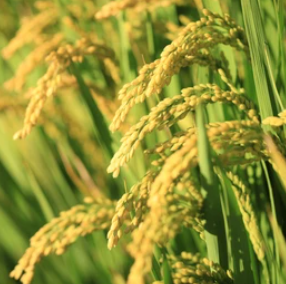Information report for OsPM19L1;OsPM1
Gene Details
|

|
Functional Descriptions
- Tissue-specific gene expression analysis revealed that OsPM19L1 was highly expressed in the leaf sheath of rice.
- Interestingly, expression of OsPM19L1 was high at the early stage of panicle development and decreased thereafter.
- qRT-PCR analysis indicated that OsPM19L1 was dramatically induced by 20% PEG stress (>600-fold), exogenous abscisic acid (>350-fold), salt and cold stress.
- Thus, OsPM19L1 appears to be closely associated with stress tolerance through ABA-dependent pathway in rice.
- Characterization of OsPM19L1 encoding an AWPM-19-like family protein that is dramatically induced by osmotic stress in rice.
- Moreover, under stress conditions, OsPM19L1 expression was enhanced in an ABI5-Like1 (ABL1) deficiency rice mutant, abl1, suggesting that ABL1 negatively regulates OsPM19L1 gene expression.
- Further investigation revealed that OsPM1 expression is regulated by the AREB/ABF family transcription factor OsbZIP46.
- Phenotypic analysis of overexpression, RNA interference (RNAi), and knock out (KO) lines showed that OsPM1 is involved in drought responses and seed germination regulation.
- The AWPM-19 Family Protein OsPM1 Mediates Abscisic Acid Influx and Drought Response in Rice.
- Our results thus revealed that OsPM1 is an ABA influx carrier that plays an important role in drought responses.
- In this study, we found that rice (Oryza sativa) OsPM1 (PLASMA MEMBRANE PROTEIN 1), encoded by a gene of AWPM-19 like family, mediates ABA influx through the plasma membrane.
- 3H-(
)ABA transport activity and FRET (Fluorescence Resonance Energy Transfer) assays both demonstrated that OsPM1 facilitates ABA uptake into cells. - Previous reports have demonstrated that overexpression of OsNAC45 enhances salt and drought tolerance in rice, and that OsNAC45 may regulate the expression of two specific genes, OsPM1 and OsLEA3-1.
Functional Keywords
- leaf , panicle , sheath , development , salt , tolerance , cold-stress , stress , abscisic-acid , stress-tolerance , transcription-factor , seed , drought , seed-germination , ABA , plasma-membrane , drought-tolerance
Literature and News
- Characterization of OsPM19L1 encoding an AWPM-19-like family protein that is dramatically induced by osmotic stress in rice . DOI: 10.4238/2015.October.5.12 ; PMID: 26505346
- The AWPM-19 Family Protein OsPM1 Mediates Abscisic Acid Influx and Drought Response in Rice . DOI: 10.1105/tpc.17.00770 ; PMID: 29716991
- OsNAC45 is Involved in ABA Response and Salt Tolerance in Rice . DOI: 10.1186/s12284-020-00440-1 ; PMID: 33284415
Gene Resources
- UniProt: Q6L4D2
- EMBL: AC136222, AK102039, AP008211
- AlphaFoldDB: Q6L4D2
- EnsemblPlants: Os05t0381400-01
- Gramene: Os05t0381400-01
- KEGG: dosa:Os05g0381400
- Orthologous matrix: RNMIAPL
- InterPro: IPR008390
- PANTHER: PTHR33294, PTHR33294:SF5
- OrthoDB: Q6L4D2
- eggNOG: ENOG502RXK5
Sequences
cDNA Sequence
- >LOC_Os05g31670.1
CTCACTTAATCACAGTAGCTCTCAGCTAGCTAGCTAAACCAGTGCTAATTGTGTTGCTAATTTGTGTTGATTTGTGATTTTGATACGAGATGGCCGGAGTAGGGAGGACGATGATCGCGCCGCTGCTGGTGCTGAATCTGATCATGTACTTGATCGTGATCGGGTTCGCGAGCTGGAATCTCAACCACTACATCAACGGCGAGACCAACCACCCGGGGGTCGCCGGCAACGGCGCCACCTTCTACTTCCTCGTCTTCGCCATCCTCGCGGGGGTGGTCGGCGCCGCCTCCAAGCTCGCCGGCGTCCACCACGTCCGCTCCTGGGGCGCGCACAGCCTCGCCGCCGGCGCCGCGTCGGCGCTCATCGCCTGGGCCATCACCGCGCTCGCCTTCGGCCTCGCCTGCAAGGAGATCCACATCGGCGGCTACCGCGGGTGGCGCCTCCGCGTGCTCGAGGCCTTCGTCATCATCCTCGCCTTCACGCAGCTGCTCTACGTCGCCATGCTCCACGGCGGCCTCTTCTCCGGCAACCACGCCGCCGGCGCCGGCGGCTACGGCGGCGACTACCCCGCCGACCACCACCACAAGCCCGCCGCCGCGGCCAGGGTCTAACTGAATTTGACCCCGACACACCGGCCAATCGATCGATGCCATCCATCATGCACACGACTGCCTATATATCTCGGTGTGATCGAGCTTTGATTTTCTCGTAATTTCTTCACTTTGTGTTTCCCGCTCGTGCATTGCTGCTAGATGCAATGGCAATGCACGAACAACGCTGTTCATATACTCTCCGTATGTAAACTTCTGTTCTCTGTATCGACGTTCGTAATCATATGTATGTACCGTTTGGTTTGGTTTTAGTTCAAATGTTTGCTGCTGTGTGTTTGGTTCTGTTTGAATTCAAGTATAAAATGTGTGCACGGATGAATTGAGAAAATGTAGAGTACTGTGATTAATTAAGTTCAACT
CDS Sequence
- >LOC_Os05g31670.1
ATGGCCGGAGTAGGGAGGACGATGATCGCGCCGCTGCTGGTGCTGAATCTGATCATGTACTTGATCGTGATCGGGTTCGCGAGCTGGAATCTCAACCACTACATCAACGGCGAGACCAACCACCCGGGGGTCGCCGGCAACGGCGCCACCTTCTACTTCCTCGTCTTCGCCATCCTCGCGGGGGTGGTCGGCGCCGCCTCCAAGCTCGCCGGCGTCCACCACGTCCGCTCCTGGGGCGCGCACAGCCTCGCCGCCGGCGCCGCGTCGGCGCTCATCGCCTGGGCCATCACCGCGCTCGCCTTCGGCCTCGCCTGCAAGGAGATCCACATCGGCGGCTACCGCGGGTGGCGCCTCCGCGTGCTCGAGGCCTTCGTCATCATCCTCGCCTTCACGCAGCTGCTCTACGTCGCCATGCTCCACGGCGGCCTCTTCTCCGGCAACCACGCCGCCGGCGCCGGCGGCTACGGCGGCGACTACCCCGCCGACCACCACCACAAGCCCGCCGCCGCGGCCAGGGTCTAA
Protein Sequence
- >LOC_Os05g31670.1
MAGVGRTMIAPLLVLNLIMYLIVIGFASWNLNHYINGETNHPGVAGNGATFYFLVFAILAGVVGAASKLAGVHHVRSWGAHSLAAGAASALIAWAITALAFGLACKEIHIGGYRGWRLRVLEAFVIILAFTQLLYVAMLHGGLFSGNHAAGAGGYGGDYPADHHHKPAAAARV*